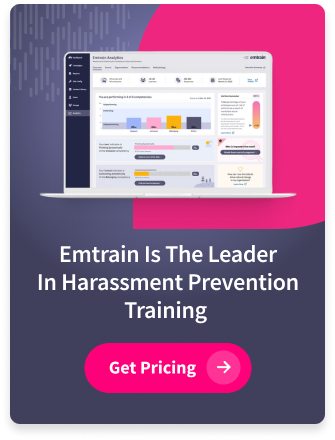[vc_row][vc_column][vc_column_text]Welcome back to ‘Check the Drama at the Door,’ our ongoing series about preventing workplace conflict and promoting a healthy culture. Over the past few weeks, I have been identifying potentially “triggering” events or issues and turning points at which companies may be able to take steps to avoid strife, boost productivity and loyalty and, one hopes, make their businesses desirable employers. If you missed the last couple of posts, check out Part 1, Part 2, and Part 3, which cover establishing culture, organizational changes, communication improvement, and proactive decision making.
My experience as an independent workplace investigator has given me a bird’s eye view of workplace conflict as it unfolds, and I have been able to spot a few patterns. One pattern is that there always seems to be a singular point in time where the action could have been avoided. I have been posting a series of blog entries that address best practices for conflict prevention and resolution while identifying potentially triggering turning points. This is the fourth post of that series.
Step 6
Optimize your training program so that the first round of training is not the only round. Almost all companies recognize that having a robust training program is a way to prevent conflict.
Unfortunately, many companies design and execute poor training programs. As explained in a 2016 report by the U.S. Equal Employment Opportunity Commission (EEOC), bad training is not only ineffective, it can be counterproductive.
Triggers:
- A lack of substantive job training for new hires. If I had a penny for every employee who either told me that they received little or no training to do their job—or for every employee who told me that they became their department’s trainer by default—well, I’d have a lot of pennies!
- A failure to properly integrate company mission and values into training for new hires. (Are you including in your training your company’s mission and value statements? Are you introducing new employees to unique aspects of your company’s culture? Are you providing a roadmap for how to be successful in the company or department?)
- Making training (particularly harassment and diversity training) a “blame game.” (Making employees or supervisors feel as though they are at fault for problems at work, particularly without providing solutions, will render your training program a complete fail and possibly produce a backlash effect.)
- Designing training that is only a litigation-avoidance tool together with a failure to provide nuanced examples/scenarios. The world of harassment, discrimination, retaliation and diversity is not all-or-nothing, black or white, or yes or no; situations are nuanced.
- A lack of creativity in training.
Practices to Consider:
- Solicit feedback from employees to see how new hire training can be improved. Does the department need to develop a training manual? Does the computer-based training offered provide tangible and helpful assistance?
- Unless the training truly is mandatory (such as harassment-avoidance training for managers in California), consider making some training voluntary, but provide incentives and rewards for participation (the most important incentive is a for the training to be effective and engaging).
- Make sure training—whether live or online—is compelling and thoughtful. Make sure examples are nuanced, that real-life scenarios are relatable, and that the delivery is engaging. Create buy-in, not blame. Remember the “WIIFM” (“what’s in it for me”) approach when addressing training topics such as harassment, management and leadership, diversity, etc..
- Provide easy-to-use training tools for how to maximize the use of HR processes such as performance evaluations, coaching, dealing with difficult situations, conflict management and resolution, discipline, terminations, etc..
- Be creative!
- Train managers AND employees.
Step 7
Make maximum use of HR tools. Rather than seeing job descriptions, job postings, performance evaluations, organizational charts, exit interviews, and other commonly used HR tools as burdens, make them truly useful and productive.
Triggers:
- Failing to put thought into tools to recruit and retain the best employees.
- Failing to set clear expectations (about the company, the department, and the position) during the recruitment and hiring process and in job postings and job descriptions.
- Using performance feedback tools as a once-a-year (painful and dreaded) exercise.
- Ranking systems and too-frequent use of performance improvement plans (PIPS).
- Using job descriptions to give vague information about what is expected of the employee.
- Using organizational charts to define people, not positions.
- Failing to use organizational charts to put people’s roles in the organization into perspective.
Practices to Consider:
- Make maximum use of tools and resources during the recruitment and hiring process to ensure accuracy and precision when describing the available job and the company (in job postings, ads, descriptions for headhunters, ads in professional journals, etc.).
- Job descriptions can be helpful tools that provide a roadmap to employees, clarifying what is expected of them in their positions.
- Performance feedback that is continuous, honest, and precise works well. If you are going to use an annual performance evaluation system, make sure managers understand that this does not mean that they should not give continuous, timely, and constructive feedback (both positive and negative).
- Carefully question the use of ranking systems, and evaluate whether PIPS are being used effectively and how to better address performance concerns. PIPS should not be used exclusively as a precursor to termination.
- Honest performance feedback should not be viewed negatively. For example, if an employee has not kept up with company changes, be honest and consider either offering the employee an opportunity to work in another job or even consider helping her make a graceful exit from your company. You are not doing an employee a favor by keeping her in a role for which she is no longer suited.
- Organizational charts should not only provide hierarchy information, but also contextualize a position within a larger framework. Remember that although the person in the position is important as an employee, decisions related to a position are about the position, not the person currently in that position.
I hope that these tips serve you well! Remember that there is always room for improvement in your organization’s culture; whether in your training programs or your evaluation procedures, it is important to constantly be looking for areas that can be built upon, and organizational gaps that can be closed. Be sure to check in regularly as Patti Perez discusses the role of investigations in resolving workplace conduct, and how to transform tensions into opportunities.[/vc_column_text][/vc_column][/vc_row]








